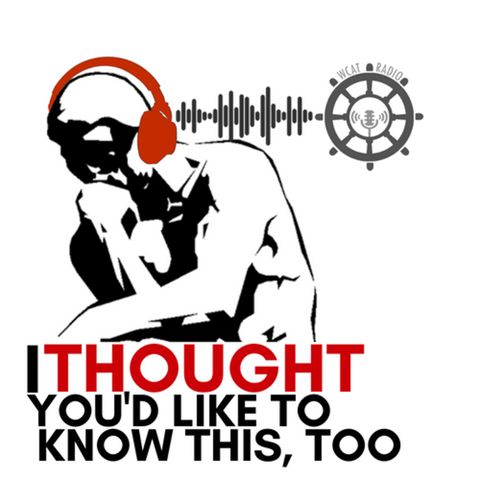ITEST Webinar Brain and Artificial Intelligence: A Tale of Two Computers, but Only One Made in the Image of God (October 12, 2024)

Descarga y escucha en cualquier lugar
Descarga tus episodios favoritos y disfrútalos, ¡dondequiera que estés! Regístrate o inicia sesión ahora para acceder a la escucha sin conexión.
ITEST Webinar Brain and Artificial Intelligence: A Tale of Two Computers, but Only One Made in the Image of God (October 12, 2024)
Esta transcripción es generada automáticamente. Ten en cuenta que no se garantiza una precisión absoluta.
Descripción
In this ITEST webinar, Dr. Rob Koons and Dr. Terrence Lagerlund deliver talks on Brain and Artificial Intelligence: A Tale of Two Computers, but Only One Made in the Image...
mostra másAI and Aristotle: Why No Artifact could ever be Conscious
Robert C. (“Rob”) Koons is a professor of philosophy at the University of Texas at Austin. He holds an M. A. from Oxford and a Ph.D. from UCLA. He is the author or co-author of five books, including The Atlas of Reality with Timothy H. Pickavance (Wiley-Blackwell, 2017) and Is Thomas Aquinas’s Philosophy of Nature Obsolete? (St. Augustine Press, 2022). He is the co-editor of four anthologies, including The Waning of Materialism (OUP, 2010) and Classical Theism (Routledge 2023). He has been working recently on an Aristotelian interpretation of quantum theory, and on defending and articulating hylomorphism in contemporary terms.
Abstract
The ancient Greek philosopher Aristotle developed a comprehensive philosophy of nature that laid the foundations for all subsequent scientific inquiry. A central notion of Aristotle’s notion is that of a substance (ousia in Greek)—an essentially independent entity that has the highest possible degree of unity (what Thomas Aquinas called ‘per se unity’). Living organisms have this kind of unity, which explains their possession of essentially unified causal powers, like nutrition, growth, and sensation. Simple, homogeneous inorganic substances also exist, like drops of water or quartz crystals. However, all human artifacts, including all robots and computers, are mere “heaps” of inorganic components, lacking the sort of unity required for life, sensation, and consciousness. AI programs can emulate the behavior of conscious organisms, but there is an irreducible gap between appearance and reality.
Terrence Lagerlund, MD, PhD
Brain, Soul, Artificial Intelligence, and Quantum Mystery
Dr. Terrence Lagerlund has been a neurologist in the Division of Epilepsy at Mayo Clinic for 35 years, treating patients with epilepsy and interpreting their electroencephalograms. He also lectures to residents and fellows on electroencephalography including basic principles of electricity and neurophysiology. He has published papers and authored book chapters on electroencephalography and epilepsy, particularly regarding quantitative analysis of electroencephalograms. Prior to becoming a neurologist, he obtained a Ph.D. in physics and worked as a postdoctoral research associate at the MIT Laboratory for Nuclear Science (doing research at Brookhaven National Laboratory and CERN) and as a term physicist at Fermilab.
Abstract
Some computer scientists claim that artificial general intelligence systems will soon be created which can duplicate and eventually far exceed the intellectual abilities of humans. In this presentation we will compare the architecture and learning ability of artificial neural networks implemented on an electronic digital machine and the neural networks of the human brain (of which Professor Marvin Minsky of MIT once pronounced that “the brain is merely a meat machine”). We will demonstrate by philosophical arguments and a mathematical theorem involving Turing machines that understanding abstract concepts, abstract reasoning to ascertain truth, and making free decisions are powers of the human mind that exceed the capabilities of any physical system whether made of electronic circuits or of biological neurons; rather, these capabilities require a nonphysical soul that tightly integrates with the human brain, because of which we can truly say that humans are made in the image and likeness of God. We will also discuss a new theory of how the soul may interact with the brain by influencing the outcome of quantum processes involving passage of ions through neuronal ion channels within the brain’s neural networks synchronized by the 40-70 Hz oscillation, and thereby continually influence retrieval of memories and behavioral choices occurring in these networks so as to allow the soul’s choice based on rational deliberation to cause a neuronal network undergoing chaotic behavior to converge upon a different final state (attractor), thereby allowing the soul’s choice to be implemented in the brain and body.
Brain and Artificial Intelligence—A Tale of Two Computers—But Only One Made in the Image of God - Institute for Theological Encounter with Science and Technology (faithscience.org)
Información
| Autor | WCAT Radio |
| Organización | WCAT Radio |
| Página web | - |
| Etiquetas |
Copyright 2024 - Spreaker Inc. an iHeartMedia Company
